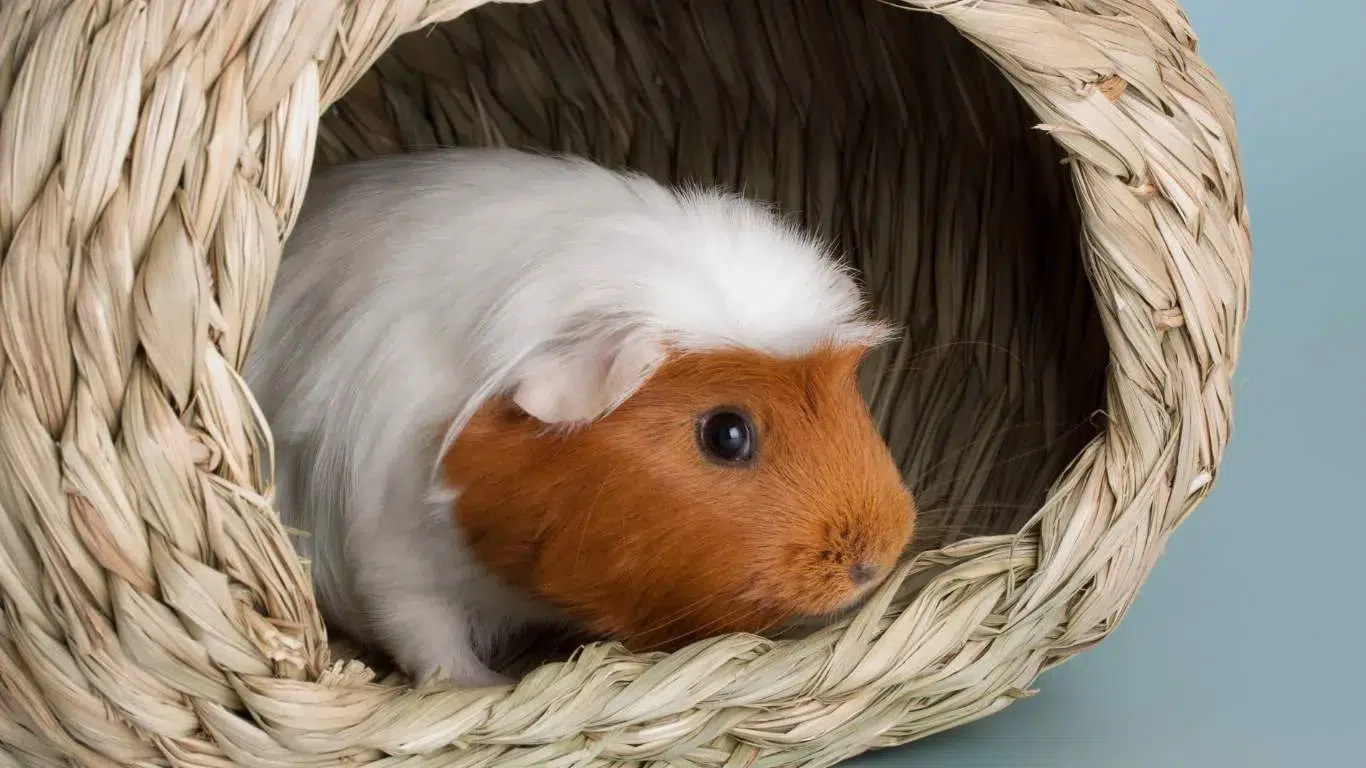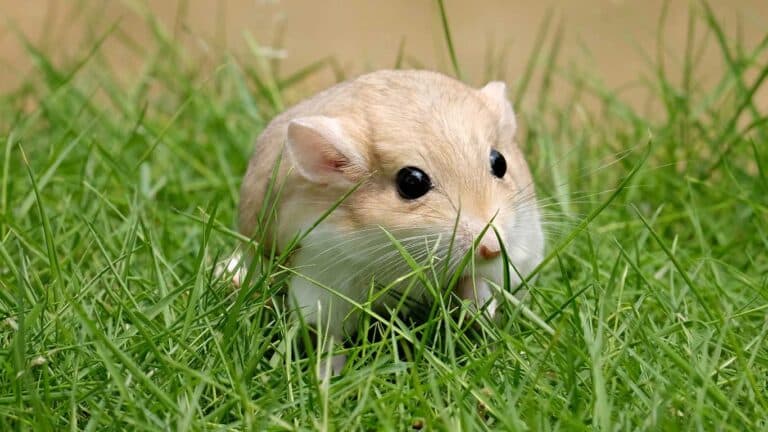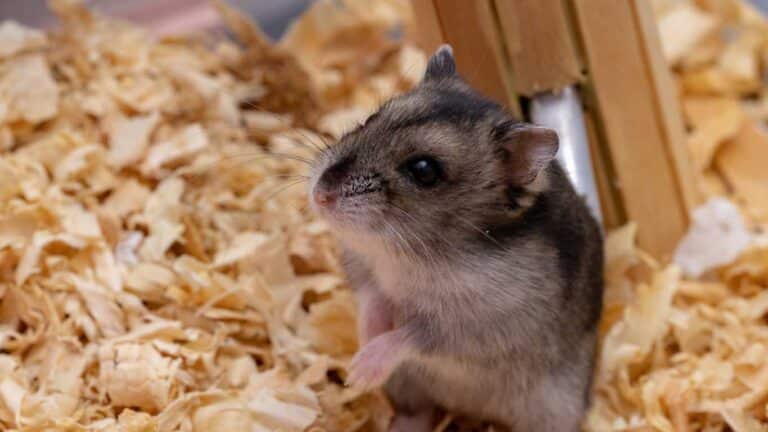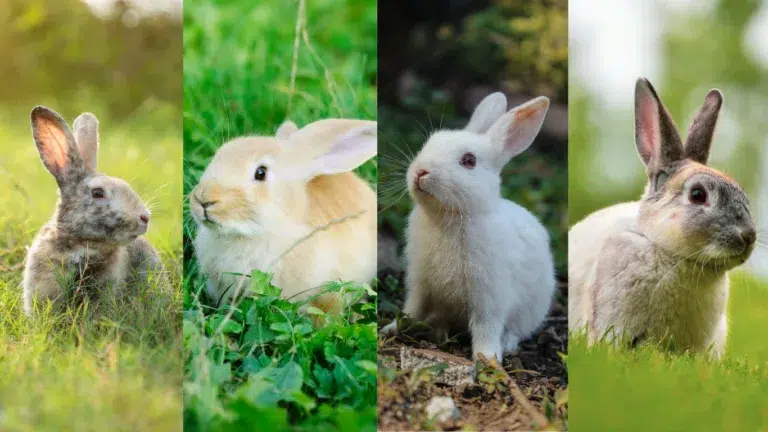Are you a guinea pig owner? Do you often wonder, ‘Do Guinea Pigs Hibernate’ during the colder months? It’s time to debunk some pet care myths and get the facts straight. In this article, we will explore the fascinating world of guinea pig behavior and clarify whether they truly hibernate or not.
Guinea Pig Wisdom Uncovered:
Guinea Pigs and Hibernation
Guinea pigs do not hibernate in the wild or in captivity. Unlike hibernating animals, guinea pigs remain active throughout the year. However, they may enter a state of torpor during cold weather, which is a survival mechanism that allows them to conserve energy in unfavorable environmental conditions. Torpor is a shorter period of decreased metabolic activity and reduced physical activity compared to true hibernation.
This adaptation helps guinea pigs cope with colder temperatures and limited food availability by slowing down their bodily functions. During torpor, guinea pigs may appear less active and spend more time sleeping, conserving energy for when resources become more readily accessible. It’s important to note that torpor is not the same as hibernation, as guinea pigs do not experience the same drastic physiological changes seen in hibernating animals.
In the wild, guinea pigs rely on their natural ability to regulate their body temperature and find shelter to stay warm during colder months. In captivity, guinea pigs require a warm and comfortable living environment to thrive. Providing appropriate bedding, cozy hiding spots, and maintaining a consistent room temperature within the recommended range of 65°F to 75°F (18.3°C to 23.8°C) is crucial for their well-being.
“Unlike hibernating animals, guinea pigs remain active throughout the year.”
Guinea Pigs and Torpor
Torpor is a natural response for guinea pigs when faced with cold weather or food scarcity. It is characterized by decreased activity, lower body temperature, and reduced metabolic rate. During torpor, guinea pigs may retreat to warmer areas of their enclosure, curl up to preserve heat, and conserve energy. This state, often mistaken for hibernation, raises the question: Do Guinea Pigs Hibernate?
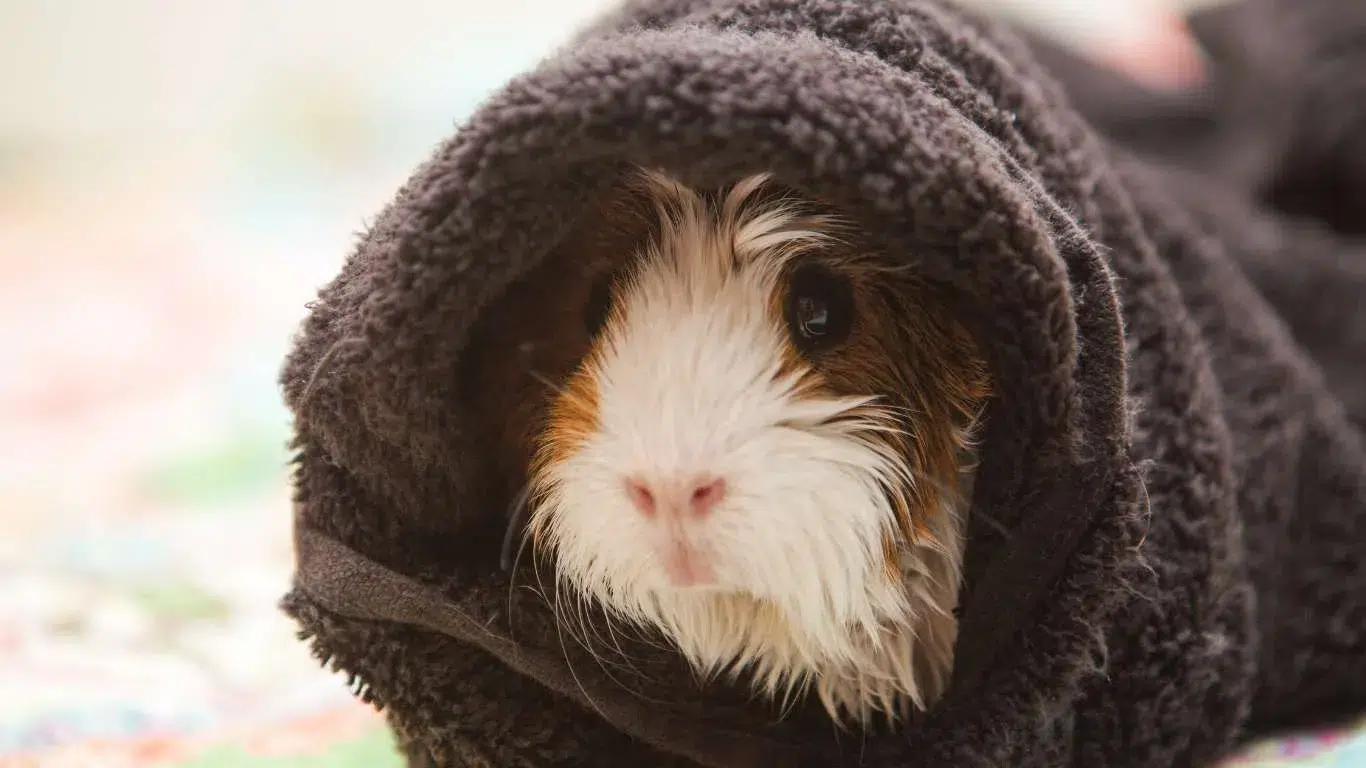
It’s important to monitor your guinea pig’s behavior during colder months. If you notice prolonged periods of decreased activity or changes in eating habits, it’s essential to ensure they are warm and provide additional warmth if needed. Avoid exposing them to drafts or very low temperatures, as this could lead to hypothermia and other health problems. Understanding whether torpor in guinea pigs is a form of hibernation is crucial, hence the query: Do Guinea Pigs Hibernate?
Comparing Hibernation and Torpor
| Hibernation | Torpor |
|---|---|
| Extended period of deep sleep | Shorter period of decreased activity |
| Significant decrease in body temperature | Modest decrease in body temperature |
| Slow heartbeat and reduced metabolism | Slightly decreased metabolic rate |
| Profound physiological changes | Milder physiological adjustments |
Understanding the differences between hibernation and torpor can help guinea pig owners provide appropriate care and ensure their pets’ well-being. While guinea pigs do not hibernate, they have their own unique ways of adapting to different environmental conditions, including entering a state of torpor.
Next, we’ll explore whether guinea pigs hibernate in the wild and discuss their behavior in captivity.
Understanding the Difference Between Hibernation and Torpor
Hibernation and torpor are two different physiological states that animals enter to cope with environmental challenges such as cold temperatures and food scarcity. While both involve a decrease in metabolic activity, there are significant differences between the two.
Hibernation
Hibernation is an extended period of deep sleep that some animals, such as bears and groundhogs, undergo during winter. During hibernation, animals experience a significant slowdown in bodily functions. Their body temperature decreases, their heart rate slows down, and their metabolism reduces to conserve energy. Hibernating animals enter a state of dormancy and can go for long periods without food or water.
Hibernation is like a deep, prolonged slumber that allows animals to survive in harsh conditions by slowing down their body processes.
Torpor
Torpor, on the other hand, is a milder form of deep sleep that helps animals conserve energy when food is scarce or environmental conditions are unfavorable. Unlike hibernation, torpor is not as profound and lasts for a shorter period. Animals in torpor experience a temporary reduction in metabolic activity and physical activity.
Torpor acts as a survival mechanism that enables animals to save energy and survive challenging circumstances.
While hibernating animals undergo a lengthy period of dormancy lasting several months, animals in torpor can enter and exit this state multiple times within a shorter timeframe.
Understanding the distinction between hibernation and torpor is crucial in comprehending how different species adapt to seasonal changes and survive in their respective environments.
Do Guinea Pigs Hibernate in the Wild?
In their natural habitat in South America, guinea pigs do not hibernate. Unlike hibernating animals, guinea pigs have not evolved to enter a deep, prolonged sleep state during the winter months. Instead, they have developed the ability to adapt to temperature changes and regulate their body temperature to some extent. Do Guinea Pigs Hibernate? The answer is no, as they remain active throughout different seasons.
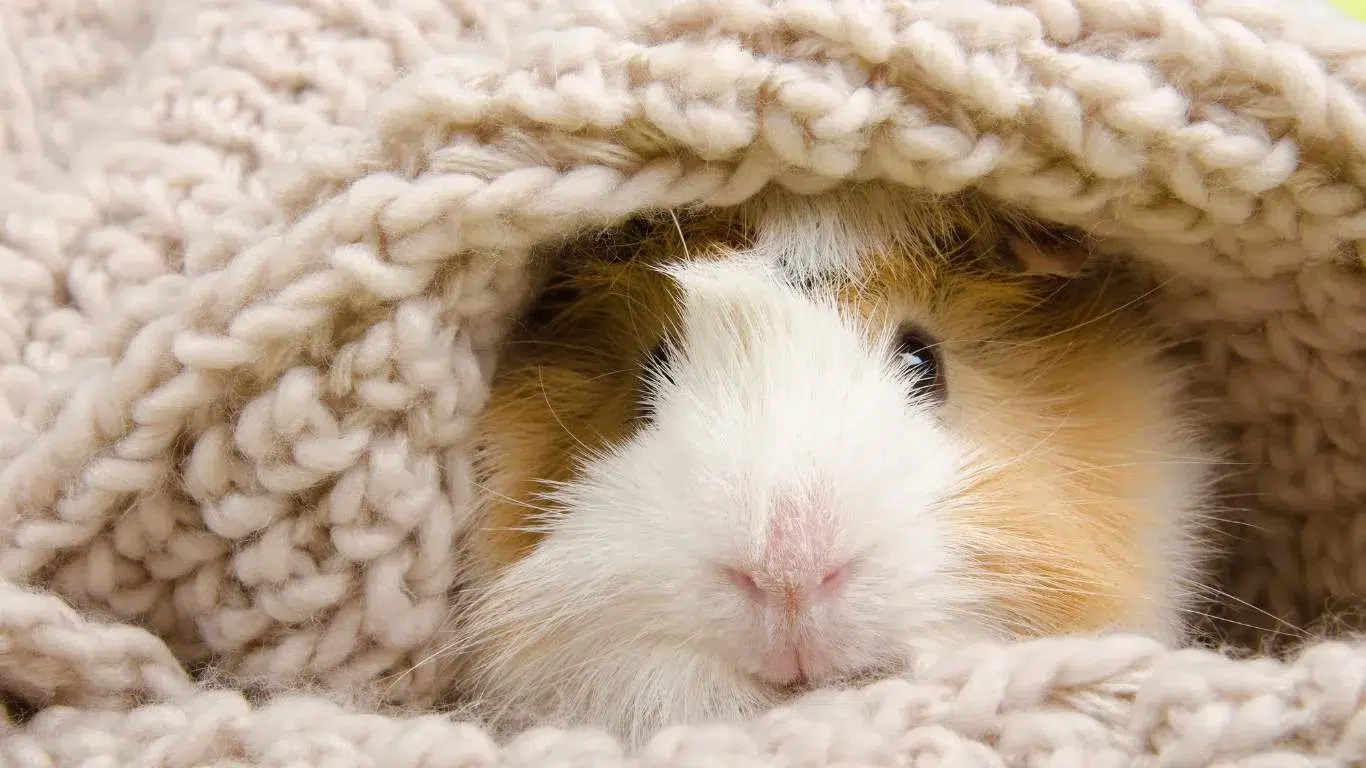
Unlike many other animals, guinea pigs are warm-blooded mammals. This means that they can maintain a relatively stable body temperature regardless of the external temperature. While they may experience some changes in activity levels and behavior in response to colder weather, they do not undergo the dramatic physiological changes associated with hibernation. Hence, the question ‘Do Guinea Pigs Hibernate’ is often asked due to their ability to endure colder climates without entering hibernation.
Guinea pigs are well-equipped to remain active throughout the year. Their warm-blooded nature allows them to engage in their usual foraging, socializing, and exploring behaviors even during the colder months. This adaptability helps them survive and thrive in their wild environment, where they do not require the same level of metabolic slowdown as hibernating animals. Therefore, when considering the query ‘Do Guinea Pigs Hibernate,’ it is clear that they have adapted differently from hibernating species.
Although guinea pigs do not hibernate in the wild, they may exhibit a state of torpor during periods of extreme cold or limited food availability. Torpor is a temporary reduction in metabolic activity and physical movement, similar to hibernation, but it is not as profound or extended. During torpor, guinea pigs conserve energy and minimize the need for food intake until conditions improve.
Hibernators vs. Non-Hibernators
The ability to hibernate has evolved in certain animal species as a survival strategy in response to environmental conditions. Hibernating animals, such as bears and groundhogs, undergo a series of physiological changes that allow them to reduce their metabolic rate, lower their body temperature, and conserve energy while enduring prolonged periods of cold and scarcity. Guinea pigs, on the other hand, belong to the category of non-hibernating animals. They have different mechanisms to cope with unfavorable conditions, such as torpor, which is a less extreme and shorter-term adaptation. This distinction highlights the diversity of strategies that animals have developed to adapt to their environments..
Do Guinea Pigs Hibernate in Captivity?
When it comes to hibernation, guinea pigs behave similarly in captivity as they do in the wild. Despite their reduced activity and slightly decreased appetite during colder months, these changes do not indicate hibernation. ‘Do Guinea Pigs Hibernate?’ is a common question, but the answer is no. Guinea pigs remain active, alert, and engaged throughout the year, even when kept as pets.
Unlike other animals that enter a deep sleep during winter, guinea pigs do not have the biological adaptations necessary for hibernation. ‘Do Guinea Pigs Hibernate?’ is a misconception, as their warm-blooded nature allows them to regulate their body temperature and remain active despite changes in environmental conditions.
Although guinea pigs may show signs of decreased activity during colder months, it is important to remember that this behavior is not the same as hibernation. The query ‘Do Guinea Pigs Hibernate?’ often arises from observing these changes. However, it is simply a response to the external factors of temperature and daylight pattern. Guinea pigs do not undergo a state of prolonged inactivity, reduced heart rate, or decreased metabolic function.
As responsible pet owners, it’s crucial to provide a warm and comfortable environment for your guinea pigs, especially during cold weather. While they may not hibernate, they still require suitable living conditions that protect them from extreme temperatures.
Offering a cozy and well-insulated enclosure, providing extra bedding, and ensuring a consistent room temperature within the ideal range of 65°F to 75°F (18.3°C to 23.8°C) will help keep your guinea pigs comfortable and healthy throughout the year.
Remember, guinea pigs are social and active animals, and they thrive when provided with an enriching environment that mimics their natural habitat. Whether in the wild or in captivity, guinea pigs do not hibernate, enjoy interacting with their surroundings, and rely on you, their pet parent, to provide them with the care they need.
What Is the Right Temperature for Guinea Pigs?
Guinea pigs are sensitive to temperature changes, and it’s crucial to provide them with the right conditions to ensure their well-being. The ideal temperature for guinea pigs is between 65°F and 75°F (18.3°C to 23.8°C). This range allows them to thrive and stay comfortable throughout the year.
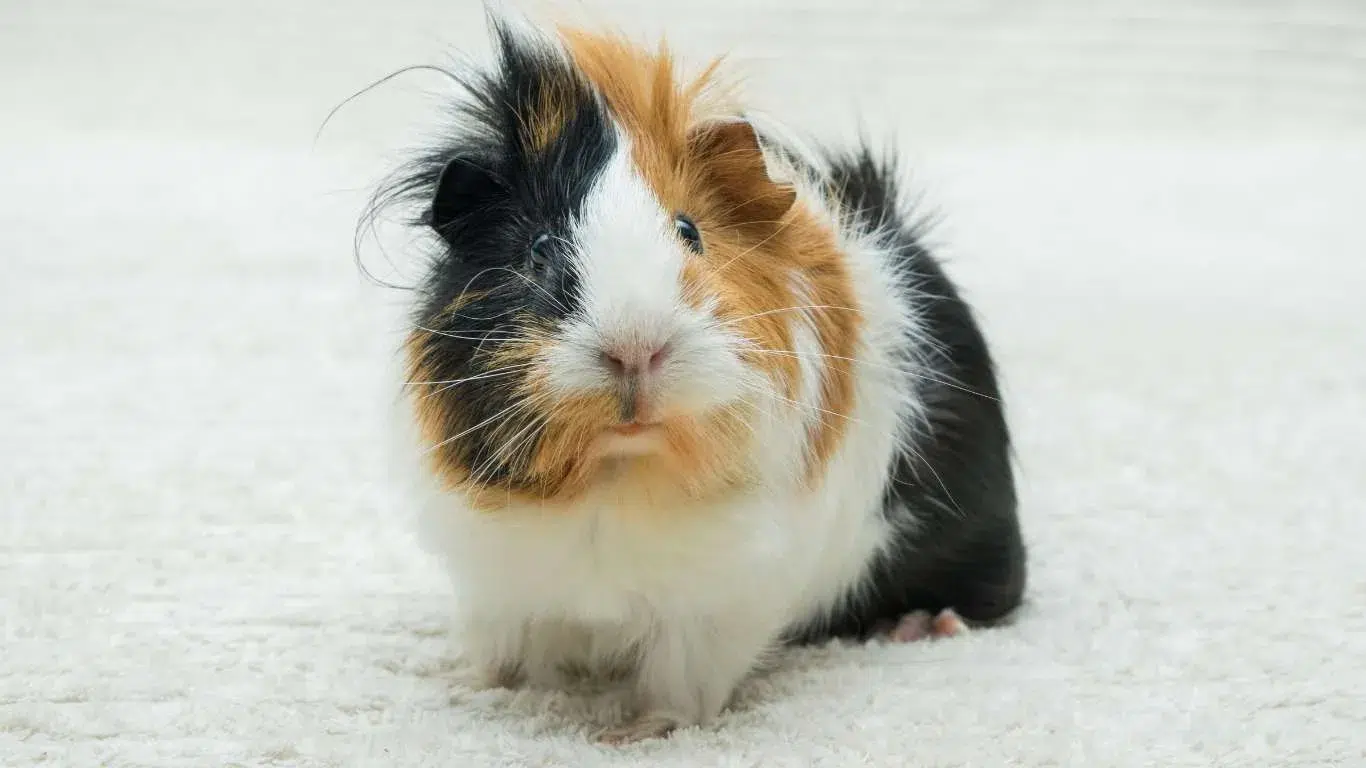
While guinea pigs can tolerate temperatures as low as 50°F (10°C), it’s important to provide them with a warm shelter or hiding place to retreat to if the temperature drops. Without a warm space, guinea pigs may struggle to maintain their body heat, leading to potential health issues like hypothermia.
Create a cozy hideaway for your guinea pigs by using a small fleece or cozy bedding material. This will give them a warm and safe space to curl up in when the temperature drops.
- Temperature range: 65°F to 75°F (18.3°C to 23.8°C)
- Tolerable low temperature: 50°F (10°C)
Temperatures below 60°F (15.5°C) can be too cold for guinea pigs and may put them at risk of hypothermia. Hypothermia occurs when the body temperature drops below normal levels and can lead to serious health complications if left untreated.
“Maintaining a consistent room temperature is essential for the well-being of your guinea pigs. Be mindful of sudden temperature drops and ensure they have a warm area to retreat to.”
– Dr. Emily Anderson, Veterinarian
To maintain the right temperature for your guinea pigs:
- Keep their living environment away from drafts or cold spots.
- Avoid placing their cage near doors, windows, or air vents that can cause temperature fluctuations.
- Monitor the room temperature regularly and adjust as needed to keep it within the recommended range.
- If the temperature drops below 60°F (15.5°C), consider using additional heating methods such as a space heater or a heat lamp specifically designed for small animals. Ensure proper safety precautions and consult with a veterinarian if needed.
By providing your guinea pigs with the right temperature and a warm and comfortable environment, you can help keep them happy and healthy.
How to Recognize and Prevent Hypothermia
Hypothermia is a serious concern for guinea pigs exposed to cold temperatures for an extended period. These small and delicate creatures are susceptible to the effects of extreme cold, which can lead to hypothermia if not properly addressed. Recognizing the signs of hypothermia and taking preventive measures is crucial in ensuring the well-being of your furry companions.
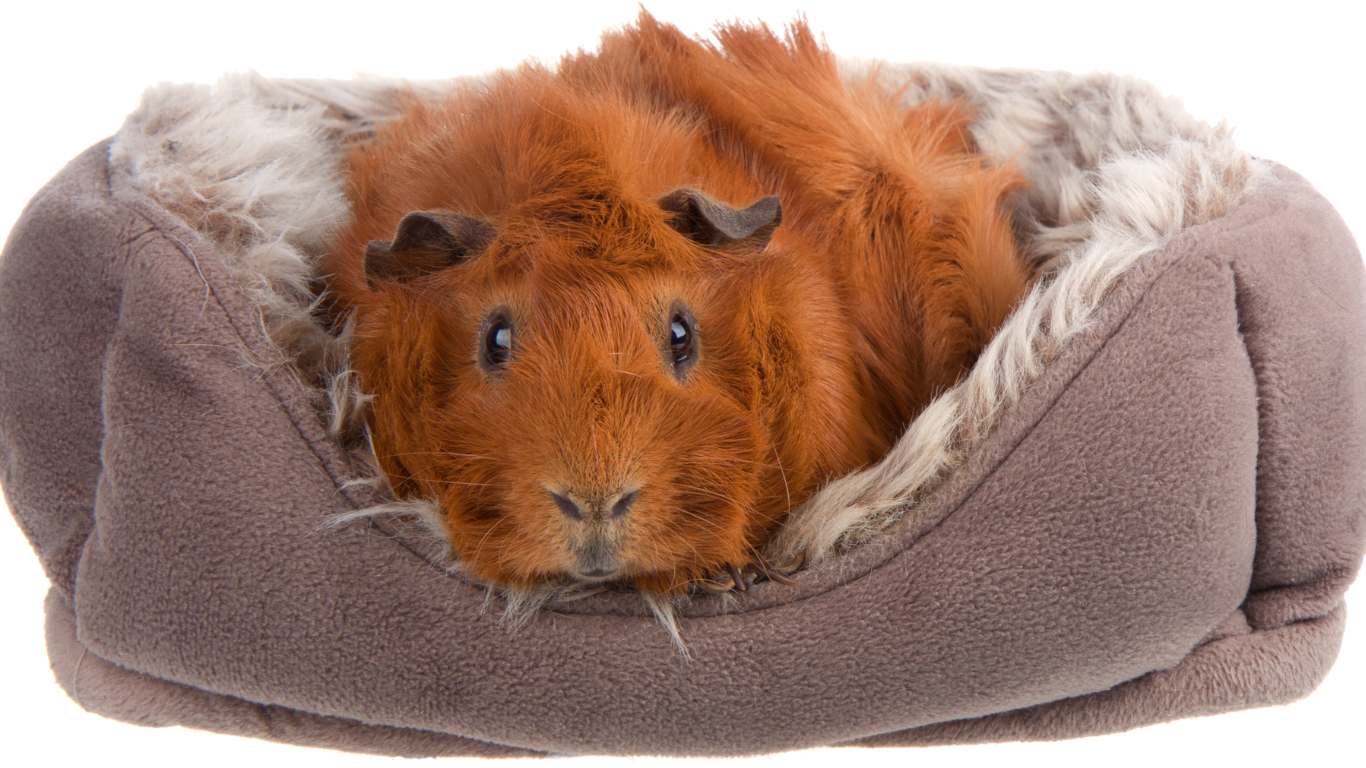
Signs of hypothermia in guinea pigs may include cold body parts, such as ears, nose, and feet. You may also notice your guinea pig shivering or exhibiting deep sleep-like behavior, known as torpor. It’s important to be vigilant and take immediate action if you observe these symptoms.
Preventing Hypothermia in Guinea Pigs
To prevent hypothermia in your guinea pigs, it’s essential to maintain a suitable environment and ensure they have adequate warmth. Here are some tips to help you keep your guinea pigs cozy:
- Monitor the room temperature: Guinea pigs thrive in temperatures between 65°F and 75°F (18.3°C to 23.8°C). Use a thermometer to regularly check the temperature in their living area and make adjustments as needed.
- Bedding: Provide your guinea pigs with a warm and comfortable bedding material, such as fleece or hay. This can help insulate them from the cold floor and provide extra warmth.
- Cozy hideaways: Place cozy hideaways, such as igloos or small shelters, in their enclosure. These enclosed spaces offer a sense of security and can help retain heat.
- Blankets: You can cover a portion of their enclosure with a blanket to create a warm and sheltered area. Ensure that the blanket is secure and cannot be chewed on or cause any safety hazards.
By following these preventive measures, you can greatly reduce the risk of hypothermia in your guinea pigs and ensure their comfort and well-being during colder periods.
Remember, prevention is key when it comes to your guinea pigs’ health and safety. Keep a close eye on their behavior and physical condition, particularly during colder months or when the room temperature fluctuates. If you suspect hypothermia or any other health concerns, consult a veterinarian promptly to seek appropriate care and treatment.
Keeping your beloved guinea pigs warm and cozy is essential for their overall health and happiness. The image above showcases guinea pigs enjoying warmth and comfort in a cozy blanket, which reflects the importance of providing them with a safe and nurturing environment.
In the next section, we will address what to do if your guinea pig is not moving but still breathing, exploring the possible reasons behind this behavior and the appropriate steps to take for their well-being.
What to Do if Your Guinea Pig Is Not Moving but Still Breathing?
If your guinea pig is inactive but still conscious and breathing, there could be various reasons for this behavior. It could be due to fear, torpor, old age, or pain. If your guinea pig is a new pet, they may be frightened and taking time to adjust to their new environment. If they are in a torpor state, gently warm them up to see if they awaken. Older guinea pigs may naturally become less active, but if you notice additional health issues or signs of pain, it’s important to consult a veterinarian.
When your guinea pig is not moving but still breathing, it can be concerning. Here are a few possible explanations for this behavior:
- Fear: Guinea pigs may freeze or stay still when they are scared or feel threatened. This is their instinctual response to potential danger.
- Torpor: Torpor is a state of decreased activity and metabolism that guinea pigs may enter during periods of extreme cold or food scarcity. During torpor, they may appear motionless but are still breathing.
- Old Age: As guinea pigs age, they tend to become less active and may spend more time resting or sleeping. This reduced activity is a natural part of the aging process.
- Pain: If your guinea pig is experiencing pain or discomfort, they may become unresponsive and not move. Common signs of pain in guinea pigs include hunched posture, reluctance to move, and vocalization.
If your guinea pig is a new pet, give them some time to acclimate to their new surroundings. Create a quiet and comfortable environment for them to feel safe. If your guinea pig is in a torpor state, gently warm them up by providing a cozy and warm area. Monitor their condition closely and observe for any signs of improvement.
If your guinea pig is older and naturally less active, make sure to provide a comfortable and supportive environment. Ensure they have a cozy hideout and soft bedding to rest in. However, if you notice any additional health issues or signs of pain, it’s crucial to seek professional veterinary care. A veterinarian can properly assess your guinea pig’s condition, diagnose any underlying problems, and provide appropriate treatment.
Keeping Your Guinea Pigs Warm During Winter
Maintaining a warm and cozy environment for your guinea pigs during winter is essential. Indoor living is ideal, as it allows you to regulate the room temperature. Avoid exposing guinea pigs to drafts, and ensure the temperature remains within the ideal range of 65°F to 75°F (18.3°C to 23.8°C).
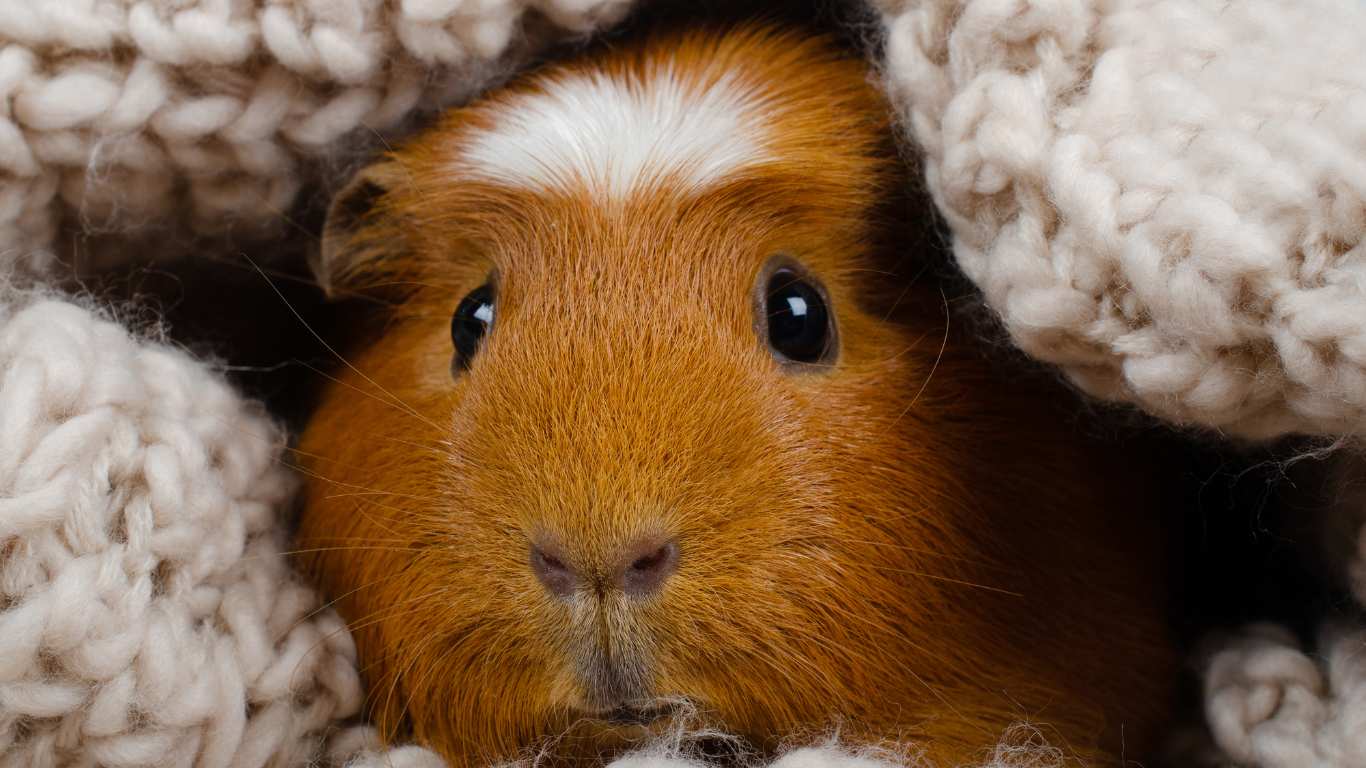
If your guinea pigs live outdoors, provide insulated shelter and use additional bedding and heating methods as necessary. To help you create a comfortable winter habitat for your guinea pigs, here are some essential tips:
- Set up their living space in a warm and draft-free area of your home. Avoid placing their cage near windows, doors, or vents that may bring in cold air.
- Use fleece bedding to provide warmth and comfort. Fleece traps heat better than other bedding materials and can help keep your guinea pigs cozy during cold winter nights.
- Consider using a microwavable heat pad or heated pet mat placed under a portion of their bedding. These provide targeted warmth and can be a cozy spot for your guinea pigs to snuggle up.
- Monitor the room temperature regularly using a thermometer. If the temperature drops below the recommended range, consider using a room heater or heat lamp to maintain a comfortable environment.
- Ensure that your guinea pigs have access to fresh, clean water at all times. Use an insulated water bottle or consider using a heated water bowl to prevent freezing.
If you’d like to see an example of a cozy guinea pig enclosure during winter, take a look at the image below:
Join the Pet Planet Diaries
Sign up for our newsletter to get the latest tips, stories, and exclusive insights into the wonderful world of pets.
Final Remarks
In brief, guinea pigs do not hibernate like some other animals do. However, they may enter a state of torpor during cold weather or when food is scarce. Torpor is a survival mechanism that allows guinea pigs to conserve energy in unfavorable conditions. While torpor is similar to hibernation, it is not the same, as guinea pigs lack the biological adaptations for true hibernation.
To ensure the well-being of your guinea pigs, it is important to provide them with a warm and comfortable environment. Maintaining a consistent temperature between 65°F and 75°F (18.3°C to 23.8°C) is ideal, as temperatures below 60°F (15.5°C) can be too cold for guinea pigs and may lead to hypothermia. Additionally, monitor the room temperature and provide adequate warmth through bedding, cozy hideaways, and blankets.
By understanding the behavior and temperature needs of guinea pigs, you can create a conducive environment for their optimal health and happiness. Remember, while guinea pigs do not hibernate, they may enter torpor as a natural response to specific conditions. By providing them with the care they need, you can ensure that your guinea pigs thrive all year round.
FAQ
Do Guinea Pigs hibernate?
No, Guinea Pigs do not hibernate. They may enter a state of torpor during extreme cold or food scarcity, but it is not the same as hibernation.
What is the difference between hibernation and torpor?
Hibernation is an extended period of deep sleep where animals experience a significant slowdown in bodily functions. Torpor, on the other hand, is a milder form of deep sleep that helps conserve energy during shorter periods of unfavorable conditions.
Do Guinea Pigs hibernate in the wild?
No, Guinea Pigs do not hibernate in the wild. They have evolved to adapt to temperature changes without entering a deep sleep state like hibernating animals.
Do Guinea Pigs hibernate in captivity?
No, Guinea Pigs do not hibernate in captivity either. They exhibit similar behavior to Guinea Pigs in the wild and remain active and alert throughout the year.
What is the ideal temperature for Guinea Pigs?
Guinea Pigs prefer temperatures between 65°F and 75°F (18.3°C to 23.8°C). Temperatures below 60°F (15.5°C) can be too cold and may lead to hypothermia.
How do I recognize and prevent hypothermia in Guinea Pigs?
Signs of hypothermia in Guinea Pigs include cold body parts, shivering, and deep sleep or torpor. To prevent hypothermia, monitor the room temperature and provide adequate warmth using bedding, hideaways, and blankets.
What if my Guinea Pig is not moving but still breathing?
There could be various reasons for this behavior, such as fear, torpor, old age, or pain. If your Guinea Pig is new, they may be adjusting to their environment. If they are in a torpor state, try gently warming them up. If you notice additional health issues or signs of pain, consult a veterinarian.
How can I keep my Guinea Pigs warm during winter?
Indoor living is ideal, as it allows you to regulate the room temperature. Avoid exposing Guinea Pigs to drafts and ensure the temperature remains within the ideal range. If your Guinea Pigs live outdoors, provide insulated shelter and use additional bedding and heating methods as necessary.

